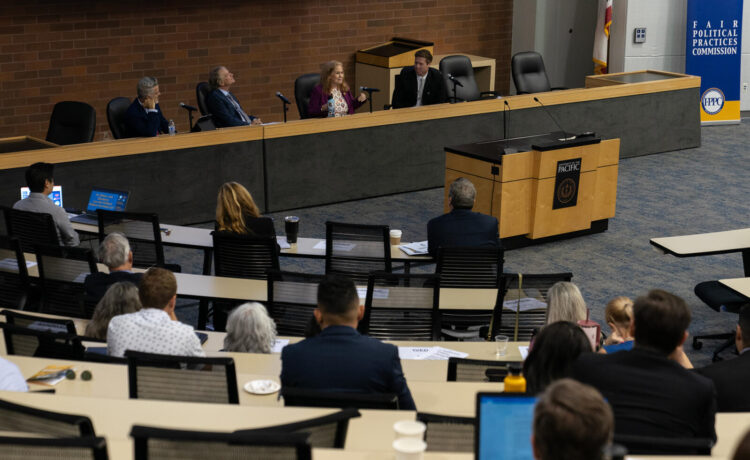Stay up-to-date with free briefings on topics that matter to all Californians. Subscribe to CalMatters today for nonprofit news in your inbox.
A recent CalMatters analysis found that investigations by the Fair Political Practices Commission, California’s campaign watchdog, can take years, at times only resolved after the investigated politician has won an election or vacated office, leaving some voters in the dark as they fill out their ballots and vet a candidate’s character.
When we started reporting on this story, we began with a straightforward question: How long does it take for the commission to resolve cases? The answer was not easy to find.
Data Collection
Throughout our investigation, we filed nine public records requests, analyzed more than 3,000 pages of documents and spoke to a total of 25 people, including former and current commissioners and staffers, ethics advocates, state and local elected officials and people who have filed complaints with the commission.
Collecting case data
First, we filed a Public Records Act request with the commission. We asked for data about all cases resolved by Jan. 1, 2024, including details of those cases and when they were each opened and closed. We also asked for cases that remained open as of the start of the year.
Meanwhile, to double-check that data, we also compared the results from our records request with a data analysis of open and closed cases that we downloaded directly from the commission’s case search portal.
The data we collected:
- Records request database: A database of open and closed cases we received from the commission in response to our public records request. The earliest record was a case opened in 2002; the next earliest was opened in 2009. We narrowed down the database to only contain cases opened since 2017. (See Incorrect case closure dates and Inconsistencies in post-2016 data.)
- Downloaded database: A database on case information we compiled based on data available on the commission’s own case search portal. We used this information to cross-reference the records request database but found too many flaws to rely on the data. (See Limitations and Commission Responses.)
Due to all the inconsistencies we noticed in both databases, however, we decided not to depend too heavily on them for detailed statistics, instead using them largely as a reference guide. We used the records request database only to calculate the duration of cases since 2017. We cross-checked the records request database with the commission’s search portal, agendas and reports for specific case information.
Using the records request database, we then analyzed the time it took to resolve each case by calculating the number of days between the date the case was opened and the date it was closed.
Gathering documents and statistics
We reviewed thousands of pages of documents and hours of meeting footage to paint a more accurate picture of the commission’s enforcement efforts. We also reviewed the commission’s executive staff reports, case enforcement records, commission meetings and agendas, staff memos, budget change proposals and legislative reports.
The commission publishes caseload and case resolution statistics, including the number of warning letters and penalties issued each year, in annual reports and executive staff reports, which are presented at each commission meeting.
Researching specific cases
We filed six public records requests for documents on specific cases on state and local officials, asking for records from both the commission and the politicians, including details of open probes into Gov. Gavin Newsom, Insurance Commissioner Ricardo Lara and Attorney General Rob Bonta. For example, the commission sent us documents about Newsom’s ongoing investigation for late behested payment reporting that the governor’s office declined to share.
In the case of former Compton City Councilmember Isaac Galvan, we built a timeline of communications between enforcement staff and Galvan’s associates based on documents we received from the commission to assess how the case took six years to resolve. We cross-referenced his bank records and interactions with the commission with his social media posts for certain details, such as his promotion of the film “Daddy’s Home 2” on the day a subpoena server tried to reach him and his posting of a hangout with friends, which the commission investigation concluded was paid for with campaign cash.
Findings
Investigation length
We learned that cases that took longer to resolve skewed the average: A total 15% of cases closed during that period of time took more than two years to resolve, with the longest taking almost seven years, according to our analysis of the records request database.

















